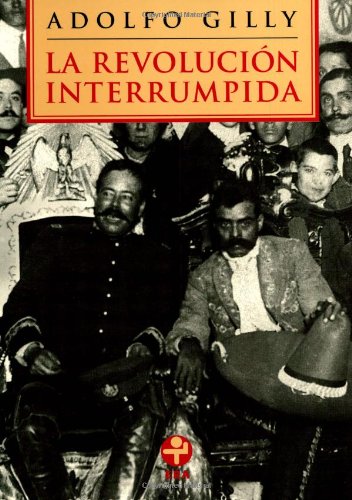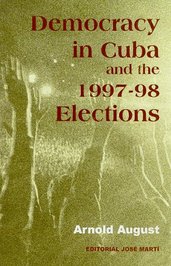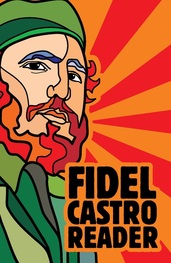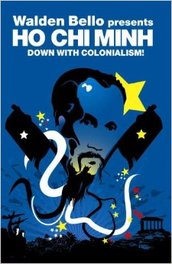In order for the transition to a socialist world-system to advance, the people in the nations of the core must take power away from the elite and put it in the hands of persons who are morally and intellectually prepared to defend the rights of the people, the wellbeing of the nation, and the sustainability of the world-system and the earth. Nation-states are principal actors in the world-system, and thus the transition to a socialist-world system would require that popular revolutions triumph in various nations, and especially important are the more powerful, wealthier, and larger nations. The transition to a socialist world-system would occur through cooperation among socialist and progressive governments of the world, just as the transformation of Latin American political reality has occurred through cooperation among socialist and progressive governments in the formation of the Community of Latin American and Caribbean States (CELAC), and just as BRICS is developing an alternative through the cooperation of governments that are mostly socialist and progressive.
How can socialist revolutions triumph in the core? To address this question, we should observe what triumphant socialist revolutions have done. Such observation should not be based in an ethnocentric pejorative evaluation, in which we assume that the poverty of their nations makes it evident that they have made fundamental errors, a false assumption that leads us to invent or magnify limitations. Rather, our observation should be based on recognition that the peoples of the Third World have accomplished something that the peoples of the North have not accomplished, namely, the development of sustained popular movements that, in some important cases, have taken power from the elite. Our observation should be based on appreciation that we the peoples of the North have much to learn from the movements of the Third World.
Let us, then, first seek to understand what the popular and socialist movements of the Third World have done, and how they have done it, including also the historically significant case of the Russian Revolution, viewed as important by the Third World socialist revolutions. Then we can proceed to analysis, in which we adapt their insights to the conditions of the nations of the North, so the peoples of the North also can attain popular power.
The taking of political power. In the change to socialism in particular nations, popular movements have emerged that have sought to take control of the political institutions of the nation, and to use political power to also take control of economic, financial, media, educational, and health care institutions. The taking of power by the people is necessary. Popular movements mobilize protests and issue demands, but they alone are not enough; they must be seen as strategies that facilitate the goal of the taking of power. Elites make concessions to protests and demands, but always in a form in which it maintains control of the political-economic system. It is idealistic to think that, in the context of the crisis of the world-system, a just and sustainable world-system can be created without the taking of power by the people in various nations. The taking of political power must be an explicit goal of the popular movements of the North.
A popular movement. The movements that have taken power are popular movements and not proletarian or industrial working-class movements. The emphasis on proletarian revolutions has been central to the Marxist intellectual tradition. But in fact, from the beginning, the revolutions were formed by social subjects of various popular classes. Marx emphasized the industrial working class, because he discerned that it would become increasingly important as capitalism developed. But the movement to which he was tied was in fact formed by artisans and intellectuals as well as industrial workers. The Russian Revolution was actually a revolution of peasants and workers. Trotsky emphasized the industrial working-class, because of his understanding of the particular conditions of Russian industry, and Trotsky’s interpretation influenced Trotskyite parties to adopt a classic Marxist formulation of a revolution of the industrial working class. Lenin, on the other, adapted Marx to Russia by formulating the concept of a worker-peasant revolution, led by a working-class vanguard. In Vietnam, the revolution was formed principally by the petit bourgeoisie and peasants. Ho Chi Minh adopted the orthodox formulation of a working-class revolution, but he placed professionals and peasants in the category of workers, for they would become workers during the process of socialist transformation. Unlike Ho, who studied in the Soviet Union, Fidel studied Marx, Engels and Lenin on his own, and he rather freely adapted Marxist concepts to the Cuban situation. He understood the revolution to be a popular revolution, formed by various sectors of the people, including agricultural workers, industrial workers, tenant farmers, small businessmen, teachers, professors and professionals. With the emergence of new social subjects in Latin America in the 1980s (women and indigenous persons), the example of Fidel to view the people, composed of various popular sectors, as the revolutionary subject was taken by Hugo Chávez in Venezuela, Rafael Correa in Ecuador, and Evo Morales in Bolivia. We can today arrive at the formulation that the socialist movements of the world have been popular movements, formed by various sectors of the people. We also should be aware that the great majority of the leaders of the popular movements, but not all, have come from the petit bourgeoisie.
Charismatic leaders. The popular movements have lifted up charismatic leaders. At first, responding to some injustice, popular protests emerge. But during the mobilization, charismatic leaders appear. Charismatic leaders have studied intellectuals and leaders of their own nations and other lands, especially those who were connected to popular movements. They have developed exceptional gifts for understanding the structures of domination and exploitation and the strategies that should be adopted. And they possess an exceptional capacity to explain to the people and to connect to the concerns and hopes of the people. They also are highly committed to the people and the nation. Many gifted leaders spontaneously emerge in the movement. But one or two leaders with exceptional gifts emerge to be a symbol of the movement of the people. Lenin, Ho Chi Minh, Fidel, and Hugo Chávez are emblematic (see various posts on Charismatic Leaders).
Charismatic leaders are a product of the movement, nurtured and formed by it. As they mature, and the movement recognizes their gifts, they are lifted up by the movement to speak on its behalf. Speaking with charismatic authority, they denounce the global powers and the structures of the established system, and they speak in defense of the poor, the oppressed, the exploited, and the excluded. They lead the movement to a more advanced stage, and they play the important role of unifying the movement, which invariably is divided into different tendencies. Their presence is indispensable for the triumph and subsequent gains of the revolution, once it attains power.
Charismatic leaders are the prophets of our time, and their speeches and writings are sacred texts, like the texts of the words and the teachings of the prophets of ancient Israel, Jesus, and Muhammad. They are the teachers of all of us, transcending the culture and the nation in which they spoke. They are the most important part of the universal culture of humanity, and their teachings constitute important advances in human understanding of social dynamics. We need to study them all, regardless of the particular nations any one of us is from, if we are to understand what is true and do what is right.
An alternative political party. During the movement, an alternative party emerges, led by the charismatic leader. It is an alternative to the traditional political parties that represent the established power. And it is an alternative also to other parties of the movement, whose understanding is flawed in some aspect or other. The party is only secondarily concerned with elections. Its principle role is to educate the people, to develop their political and social consciousness, and to call the people to action, even heroic action. The members of the party are well informed about the history of the nation, the structures of domination, the possibilities for emancipation and liberation, and the international situation. And they have complete loyalty to the charismatic leader, as a result of their personal awareness of his exceptional gifts. The charismatic leader cannot be everywhere at the same time, but the party can be. The party members are the voice of the charismatic leader in every place of work and study, in every factory, field, university classroom, and neighborhood. The party is indispensable for the education of the people and for the united and mass action of the people.
A manifesto. Popular revolutions have issued manifestos, which explain the present situation of the nation and the popular struggle in historical and global context. They denounce the structures of domination and exploitation, and they explain the necessity of the taking of power by the people. The Communist Manifesto, written by Marx and Engels during the Western European popular movement of the 1840s, is the most famous popular manifesto. History Will Absolve Me, the testimony of Fidel at his 1953 trial for the attack on Moncada Barracks, functioned as the manifesto of the Cuban Revolution in the 1950s. It galvanized the people and announced a new stage of the Cuban Revolution, which had begun in 1868; it put Fidel and the July 26 Movement at the head of the Cuban Revolution.
A platform. The popular revolution has a platform, a set of concrete proposals that address the most pressing injustices that the people confront. The platform of Lenin involved the transfer of power from the parliament to the popular councils (soviets), the withdrawal of Russia from the World War I, and the distribution of land to the peasants. The call for power to the soviets, peace and land galvanized the people, and it put Lenin and the Bolshevik Party at the head of the Russian Revolution.
The platform of the Cuban Revolution was contained in History Will Absolve Me. Its concrete proposals included the restoration of the Constitution of 1940, agrarian reform, profit-sharing for workers and employees, educational reform, nationalization of US-owned utilities companies, and the confiscation of property that had been fraudulently obtained through government corruption. All of these proposals responded to abuses and injustices that the people experienced, which were provoking disgust with the Batista regime and alienation from the neocolonial republic. They were proposals that Fidel and the July 26 Movement promised to implement when they arrive to power, a promise that was delivered.
The institutionalization of charismatic authority. After the charismatic leader is gone, the party and its leaders continue to lead the people, on the basis of the teachings of the charismatic leader, in a constantly evolving national and international situation. The party must be organically tied to the people. Its members must be from and of the people, living among them, and not living apart. It must listen to the concerns of the people, which was one of the most important gifts of the charismatic leader.
Thus, if we observe the revolutions of the world, we see that the people have taken control of political and other institutions of the nation through the formation of popular movements that have lifted up charismatic leaders, have formed alternative political parties, and have issued manifestos and platforms. We may have other conceptions concerning how revolutions ought to occur, but we should be guided by the general process through which the elite has been dislodged from power in other lands. If human experience is to be our guide, we should understand these revolutionary dynamics and take them into account, as we reflect on what needs to be done by the people in the nations of the North.
The adaption of these lessons from the revolutions of the world to the particular conditions of the United States will be the subject of our next posts.

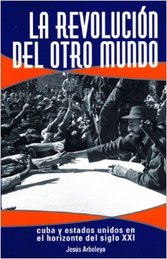
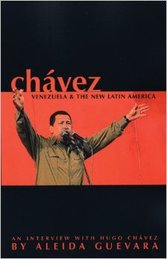
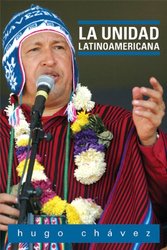

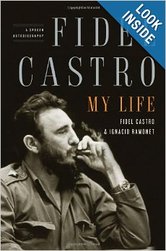
 RSS Feed
RSS Feed
